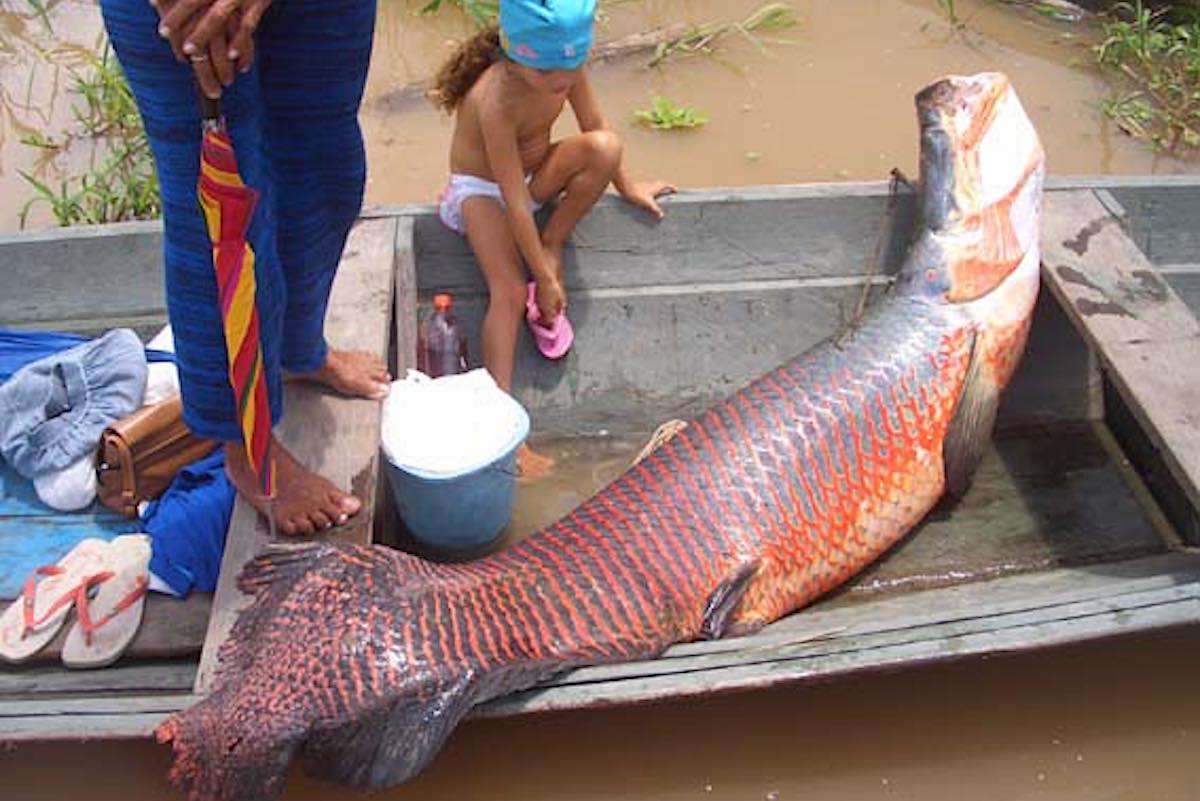To Cut Neighbors' Fuel Costs 'Baker Ed' Revived Tradition of a Village Oven - Baking for Others for Free
Guisborough residents can bring in uncooked cakes on a Friday and collect them the following Monday at Brickyard Bakery,.

Some of the best conservation stories in history begin by properly organizing and regulating the hunting of that animal, and the "pirarucu" or arapaima, of the Amazon River Basin is a perfect example.
It used to take fishermen five days or more to land one, but sustainable fishing laws have have quadrupled their adult populations in some waterways, and increased them 10-fold in others.
The pirarucu is a prehistoric beast of a fish, with a gaping maw, red scales, and under-developed fins. They can weigh as much as 450 pounds (220 kilos) and grow 10 feet in length (3 meters).
Famous TV fisherman Jeremy Wade recorded an episode of his show River Monsters about reported pirarucu attacks on people; such is their monstrous size.
But for fishermen, who trap them with nets and wooden clubs, a single large adult inspires joy rather than dread, and can fetch $100-a major boon to their families who get by with subsistence farming outside the short fishing season.
During the 1960s, improved boat motors, ice machines, and fishing equipment led to overfishing of the pirarucu, and it wasn't until the 90s that river-dwelling locals, indigenous communities, and Dutch missionaries banded together to petition the government for protection of the area from illegal fishermen.
In 2011 the managed fishing began, and every year since then fishermen row out to the lakes and floodplains of regions like Carauari, Sí£o Raimundo, Mamirarua, and Medio Jurua to count the pirarucu adults.
Along with being the largest fish in the Amazon Basin, they are also unique in that they need to surface for water-which like whales they sometimes do by slapping the water with their bright red tails.
The numbers are reported to environmental authorities, and 30% of that number is allowed to be caught in a three-week period of September the following year when water levels are lowest. Each one caught is tagged so buyers in Manaus-a large city three-days journey down the river, can be sure it wasn't poached.
According to AP, there were 1,335 pirarucus in the Sí£o Raimundo region in 2011. Last year, there were 4,092 specimens, according to their records.
In the Carauari region, the number of pirarucu spiked from 4,916, in 2011, to 46,839, ten years later.
"Our pirarucu is so tasty, everybody that eats it falls in love with it and wants more," Rosilda da Cunha, a sister of Manoel who lives in Sao Raimundo, told the AP.
The money these extremely rural communities make from this fishing is allowing them to buy solar panel arrays to supplement the diesel generators they use for electricity.
In America, every charismatic bird and mammal seemed to have its own brush with extinction. Regulated hunting was a piece of the conservation puzzle that led to massive recoveries-some of which led to flourishing of greater numbers than were seen when the Pilgrims landed at Plymouth.
SHARE This Brilliant Fish And Its Bounty On Social Media…
Be the first to comment